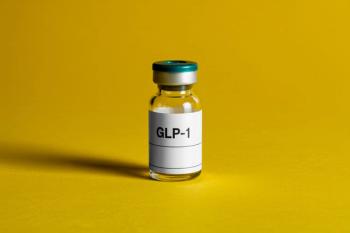
- Vol 32 No 5
- Volume 32
- Issue 5
Intellectual Disability and Psychiatric Comorbidity: Challenges and Clinical Issues
Intellectual disability affects an individual’s functioning in everyday life. The risk for a psychiatric disorder is greater in persons with ID than in those with intelligence in the normal range. Here: the latest information on ID.
CLINICAL
Intellectual disability (ID) is the impairment of general mental abilities, which affects an individual’s functioning in everyday life. According to
Problem/challenging behavior is heterogeneous and its assessment and management are beyond the scope of this article. The focus here is on the comorbid presentation of affective and anxiety disorders, psychotic disorder, and autism spectrum disorder.
Challenges
Specific challenges in the field of ID can make the diagnosis of comorbid psychiatric disorders difficult. Individuals with ID can experience communication difficulties that vary from problems expressing psychological experiences to being unable to produce speech. As may be expected, this results in an under-reporting of psychiatric symptoms.3 Clinicians must be aware of this and place greater emphasis on observ-ing the individual and on obtaining collateral history from family and care staff.
There can be a tendency to attribute any behavioral/psychological disturbance to an individual’s ID (known as diagnostic overshadowing).4 This significantly increases the risk of missed diagnoses. Individuals with ID often have the same form of psychopathology (eg, auditory hallucinations) as those with intelligence in the normal range. However, the content of this psychopathology can differ significantly (see Case Vignettes for examples). As a result, the presentation of a comorbid psychiatric disorder in this group is often atypical. Be alert to this when conducting assessments.
Affective and anxiety disorders
In a study on depression symptoms in individuals with ID, Esbensen and Benson5 found that those with MDD and ID had a more negative attributional style and lower self-esteem. We have found that because of the often challenging nature of diagnosing depression in individuals with ID, clinicians frequently find themselves relying on the biological symptoms of depression for diagnosis: sleep and appetite disturbance, poor concentration and memory. Mayville and colleagues6 found that persons with depression and ID had a lower food intake than those with ID who were not depressed.
A review of rapid cycling bipolar affective disorder found that hypersomnia occurred in 70% of sleep-disturbed depressed patients with ID.7 There is little literature on the presentation of mania in individuals with ID. In their review of rapid cycling bipolar affective disorder in persons with ID, Vanstraelen and Tyrer7 found that mood states were generally described in terms of observable behavior rather than affective state. They found that signs of manic episodes typically included insomnia, increased activity, pressured speech, and agitation.
Because of the lack of randomized controlled trials for the management of anxiety, depression, and bipolar affective disorder in persons with ID, recommended pharmacological options do not differ significantly from those for individuals with intelligence in the normal range. It is worth emphasizing that efforts should be made to identify and manage potential precipitating and perpetuating factors (eg, change in environment, disrupted sleep).
CASE VIGNETTE
Harry is 35 years old, with moderate ID. He presents with a long-standing history of anxiety symptoms that, when particularly severe, include excessive talking, asking the same questions repeatedly, and tremulousness. On several occasions and seemingly without warning, Harry hit other service users and members of staff. Following one of these altercations, he began referring to others as “naughty” and telling them they would be punished.
An adapted form of CBT is used to explore and address some of Harry’s anxieties. He is also treated with an SSRI.
CASE VIGNETTE
David is 22 years old, with moderate ID and bipolar affective disorder; he has no speech. He presents with a 1-week history of significantly increased activity including destruction of property and no need of sleep. There had been a recent change in David’s day center, and he had struggled to settle in there. He has no family history of any psychiatric disorder.
In the acute phase, David is treated with sodium valproate and a benzodiazepine; later, risperidone is added. His sleep is also managed pharmacologically. Following sufficient clinical improvement, ID services manages David’s phased return to the day center, with additional support from care staff.
Psychotic disorder
The prevalence of psychotic disorder (including schizoaffective disorder) in individuals with ID is about 3.8%.2 This figure is in keeping with results from
It can be very difficult to describe certain psychotic phenomena such as somatic passivity when one’s intelligence is in the normal range, so it is perhaps unsurprising that it is even more of a struggle for persons with communication difficulties. In keeping with this, Bouras and colleagues described a higher rate of observable psychopathology in those with psychosis and ID over and above the rate of reported psychopathology in this group. Pharmacological treatment of psychosis in those with ID does not differ significantly from psychosis in those without ID.
CASE VIGNETTE
Sarah, a 20-year-old with mild ID, presented with a 1-month history of delusions that her best friend was trying to kill her and her family. Third person auditory hallucinations told Sarah to kill her friend. She lacked motivation and often did very little with her day. There was a history of schizophrenia in Sarah’s mother and ID in her father.
Sarah was treated with olanzapine and experienced a good response with full resolution of her hallucinations and delusions over the next few months. Her negative symptoms persisted. A careful multidisciplinary approach facilitated her discharge from the hospital.
Autism spectrum disorder
Individuals with autism spectrum disorder and ID may require additional support from the multidisciplinary team with regard to managing day-to-day living (eg, occupational therapy for sensory stimulation, speech therapy input for communication). Currently there are no medications to treat autism. When problems such as challenging behaviors arise, efforts must be made to identify and manage precipitating and perpetuating factors and comorbid psychiatric disorders. When symptom control is required (eg, for aggression) and the above issues have been addressed, an antipsychotic medication is often used. However, this should be a short-term option only, and efforts must be made to ensure that this is not simply an attempt to oversedate the patient.
Comorbid physical disease
Individuals with ID have more physical disorders per person than persons in the general population. In a population study by
A general
Compared with the general population, persons with ID are at increased risk for being obese, with its accompanying risks of diabetes mellitus and other problems. They also have an increased risk of
In view of medication use for comorbid conditions, clinicians should be aware of the potential for drug-drug interactions-particularly in those patients who are receiving antiepileptic medication. Altered pharmacokinetics resulting from abnormal weight may necessitate adapted dosing regimens. Finally, the adverse effects of psychopharmacological treatments may worsen comorbid physical disorders, such as obesity and low seizure threshold.
Conclusion
The risk for a psychiatric disorder is greater in persons with ID than in those with intelligence in the normal range. Communication deficits present a challenge to diagnosis, and clinicians must be able to adapt to ensure they ascertain the relevant information that will allow them to make a diagnosis. They should also be alert to the dangers of diagnostic overshadowing.
For patients with ID, once a diagnosis of a psychiatric disorder is made, pharmacological treatment does not differ significantly from that in the general population, but care may be required to avoid medication interactions and underdosing or overdosing, as well as the potential to worsen comorbid conditions. Finally, individuals with a psychiatric disorder and ID may require additional multidisciplinary support.
Disclosures:
Dr Kendall is a WCAT Fellow, MRC Centre of Neuropsychiatric Genetics and Genom-ics, Cardiff University School of Medicine, UK. Professor Owen is Director of the MRC Centre for Neuropsychiatric Genetics and Genomics, Director of the Institute of Psychological Medicine and Clinical Neurosciences, and Emeritus Director of the Neuroscience and Mental Health Research Institute, Cardiff University School of Medicine. The authors report no conflicts of interest concerning the subject matter of this article.
References:
1. American Psychiatric Association. Intellectual disability.
2. Cooper SA, Smiley E, Morrison J, et al. Mental ill-health in adults with intellectual disabilities: prevalence and associated factors. Br J Psychiatry. 2007; 190:27-35.
3. Veerhoven WMA, Tuinier S. Neuropsychiatric consultation in mentally retarded patients. Eur Psychiatry. 1997;12:242-248.
4. Reiss S, Levitan GW, Szyszko J. Emotional disturbance and mental retardation: diagnostic overshadowing. Am J Ment Defic. 1982;86:567-574.
5. Esbensen AJ, Benson BA. Cognitive variables and depressed mood in adults with intellectual disability. J Intellect Disabil Res. 2005;49(pt 7):481-489.
6. Mayville S, Matson JL, Laud RB, et al. The relationship between depression and feeding disorder symptoms among persons with severe and profound mental retardation. J Dev Phys Disabil. 2005;17:213-224.
7. Vanstraelen M, Tyrer SP. Rapid cycling bipolar affective disorder in people with intellectual disability: a systematic review. J Intellect Disabil Res. 1999; 43(pt 5):349-359.
8. Turner TH. Schizophrenia and mental handicap: an historical review, with implications for further research. Psychol Med. 1989;19:301-314.
9. Bouras N, Martin G, Leese M, et al. Schizophrenia-spectrum psychoses in people with and without intellectual disability. J Intellect Disabil Res. 2004;48 (pt 6):548-555.
10. Vig S, Jedrysek E. Autistic features in young children with significant cognitive impairment: autism or mental retardation? J Autism Dev Disord. 1999; 29:235-248.
11. Matson JL, Wilkins J, Ancona M. Autism in adults with severe intellectual disability: an empirical study of symptom presentation. J Intellect Dev Disabil. 2008;33:36-42.
12. Beange H, McElduff A, Baker W. Medical disorders of adults with mental retardation: a population study. Am J Ment Retard. 1995;99:595-604.
13. Matthews T, Weston N, Baxter H, et al. A general practice-based prevalence study of epilepsy among adults with intellectual disabilities and of its association with psychiatric disorder, behaviour disturbance and carer stress. J Intellect Disabil Res. 2008;52 (pt 2):163-173.
14. Branford D, Bhaumik S, Duncan F. Epilepsy in adults with learning disabilities. Seizure. 1998;7: 473-477.
15. Emerson E. Underweight, obesity and exercise among adults with intellectual disabilities in supported accommodation in Northern England. J Intellect Disabil Res. 2005;49(pt 2):134-143.
16. Hollins S, Attard MT, von Fraunhofer N, et al. Mortality in people with learning disability: risks, causes, and death certification findings in London. Dev Med Child Neurol. 1998;40:50-56.
Articles in this issue
over 10 years ago
Psychiatric Care of Patients With Hepatitis C: A Clinical Updateover 10 years ago
Lessons From Litigationover 10 years ago
Defending a Malpractice Suit: Lessons Learnedover 10 years ago
Correcting Psychiatry’s False Assumptions and Implementing Parityover 10 years ago
Psychiatric Times Welcomes New Editorial Board Members!over 10 years ago
Suicide in College Students: A Call to ActionNewsletter
Receive trusted psychiatric news, expert analysis, and clinical insights — subscribe today to support your practice and your patients.

















